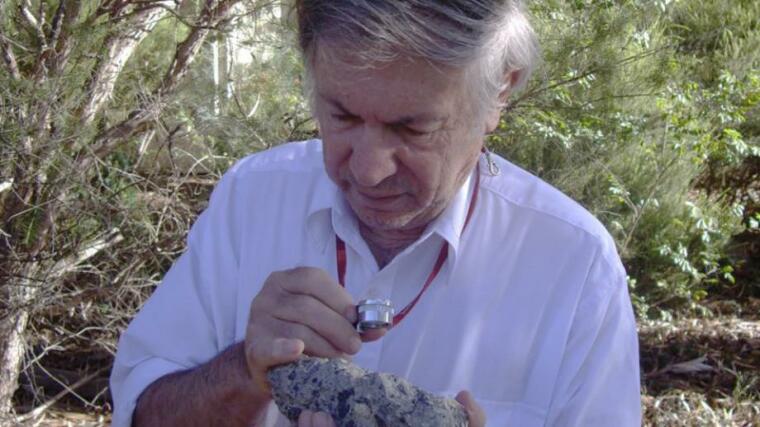World's Largest Asteroid Found in Australia, Impacts Measuring 400KM Wide Found

Scientists have discovered a 400-km wide impact zone from a huge meteorite in Central Australia.
Calling it the largest impact zone ever found on earth, the crater from the impact that occurred millions of years ago had already disappeared. However, geophysicists found the twin scars of the impact hidden deep in the earth's crust.
"The two asteroids must each have been over 10 kilometers across – it would have been curtains for many life species on the planet at the time," said Dr. Andrew Glikson, the lead researcher from the Australian National University.
The impact zones were discovered during a drilling operation as part of a geothermal research in an area near the borders of South Australia, Queensland and the Northern Territory.
Glikson said the impact zones will play a role in studying the earth's evolution. "Large impacts like these may have had a far more significant role in the Earth's evolution than previously thought," he said.
The scientists don't know the exact date of the impact, but the surrounding rocks in area were estimated to be 300 to 600 million years old.
However, the scientists could not relate the impact zones to any extinction event like when a large meteorite struck the earth 68 million years ago that sent a plume of ash found as a layer of sediment in rocks around the world.
The plume was believed to have caused the extinction of life on earth including many dinosaur species.
"It's a mystery – we can't find an extinction event that matches these collisions. I have a suspicion the impact could be older than 300 million years," Glikson said.
The impact zones were found during a geothermal research project drilling more than two kilometers into the earth's crust.
The drill core had traces of rocks that had been turned to glass by the extreme temperature and pressure caused by a major impact.
The Australian National University said magnetic modelling of the deep crust in the area traced out bulges hidden deep in the Earth, rich in iron and magnesium, corresponding to the composition of the earth's mantle.
"There are two huge deep domes in the crust, formed by the Earth's crust rebounding after the huge impacts, and bringing up rock from the mantle below," he said.
The two impact zones total more than 400 kilometres across, in the Warburton Basin in Central Australia.
 Christians don't have to affirm transgenderism, but they can’t express that view at work: tribunal
Christians don't have to affirm transgenderism, but they can’t express that view at work: tribunal Archaeology discovery: Medieval Christian prayer beads found on Holy Island
Archaeology discovery: Medieval Christian prayer beads found on Holy Island Presbyterian Church in America votes to leave National Association of Evangelicals
Presbyterian Church in America votes to leave National Association of Evangelicals Over 50 killed in 'vile and satanic' attack at Nigerian church on Pentecost Sunday
Over 50 killed in 'vile and satanic' attack at Nigerian church on Pentecost Sunday Ukrainian Orthodox Church severs ties with Moscow over Patriarch Kirill's support for Putin's war
Ukrainian Orthodox Church severs ties with Moscow over Patriarch Kirill's support for Putin's war Islamic State kills 20 Nigerian Christians as revenge for US airstrike
Islamic State kills 20 Nigerian Christians as revenge for US airstrike Man who served 33 years in prison for murder leads inmates to Christ
Man who served 33 years in prison for murder leads inmates to Christ


 Nigerian student beaten to death, body burned over ‘blasphemous’ WhatsApp message
Nigerian student beaten to death, body burned over ‘blasphemous’ WhatsApp message 'A new low': World reacts after Hong Kong arrests 90-year-old Cardinal Joseph Zen
'A new low': World reacts after Hong Kong arrests 90-year-old Cardinal Joseph Zen Iran sentences Christian man to 10 years in prison for hosting house church worship gathering
Iran sentences Christian man to 10 years in prison for hosting house church worship gathering French Guyana: Pastor shot dead, church set on fire after meeting delegation of Evangelicals
French Guyana: Pastor shot dead, church set on fire after meeting delegation of Evangelicals ‘Talking Jesus’ report finds only 6% of UK adults identify as practicing Christians
‘Talking Jesus’ report finds only 6% of UK adults identify as practicing Christians Mission Eurasia ministry center blown up in Ukraine, hundreds of Bibles destroyed: 'God will provide'
Mission Eurasia ministry center blown up in Ukraine, hundreds of Bibles destroyed: 'God will provide' Church holds service for first time after ISIS desecrated it 8 years ago
Church holds service for first time after ISIS desecrated it 8 years ago Burger King apologizes for 'offensive campaign' using Jesus' words at the Last Supper
Burger King apologizes for 'offensive campaign' using Jesus' words at the Last Supper Uganda: Muslims abduct teacher, burn him inside mosque for praying in Christ’s name
Uganda: Muslims abduct teacher, burn him inside mosque for praying in Christ’s name